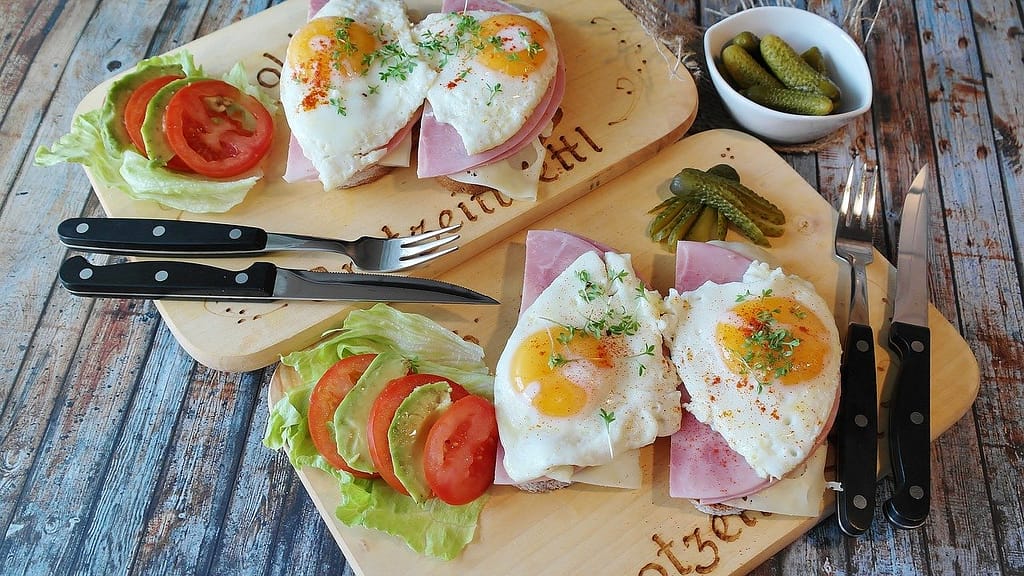There are lots of easy, small things you can do every time you cook to get better, more professional results. Here are our top 10 tips for improving your cooking:
1. Choke up on your chef’s knife. For better control, choke up on the handle to the point of putting your thumb and the side of your index finger onto the side of the blade right above the handle. Speaking of chef’s knives, invest in a good one (and keep it sharp). The longer, wider blade of a chef’s knife will give you speed, control, and confidence.

2. Start with the best ingredients. Imported Parmigiano-Reggiano is so much better than domestic parmesan that the two can hardly even be compared; excellent chocolate makes all the difference in a cake; and fresh homemade breadcrumbs are a world apart from packaged crumbs.

3. Use your hands. Hands are extremely sensitive and sophisticated cooking tools. You can develop this sense of touch by paying attention to how different foods feel at different degrees of doneness, even as you’re checking them with a thermometer, a toothpick, or a knife. Meat, for example, goes from being very soft when it’s rare to quite firm when well done. Touch can also indicate when a cake is baked, if a dough is kneaded enough, and whether a pear is ripe.

4. Switch to kosher or sea salt, and don’t be stingy with it. Kosher salt and sea salt have a much better flavor than ordinary table salt. Though food shouldn’t taste salty, going to the opposite extreme and using little or no salt in your cooking results in food that taste flat. Even if a recipe suggests an amount of salt to use, your ingredients—as well as your palate—may be different enough from the recipe writer’s to necessitate adjustments.
5. Don’t crowd the pan when sautéing. Be sure you can see the bottom of the pan betwee the pieces of food. Too much food will lower the temperature of the pan, creating a lot of steam, meaning you won’t get good browning. It’s also important to dry food before sautéing it and to make sure the pan is good and hot.

6. Reduce liquids to concentrate flavor. If you’ve braised meat or vegetables, take the main ingredient out when it’s done and reduce the sauce a bit more before serving. When you deglaze a pan, be sure to reduce the added liquid by boiling it over high heat. Reduce homemade stocks before use, too.

7. Bake pie and tart crusts longer than you think you should. Pastry doughs taste much better when cooked long enough for the sugars in the crust to caramelize. You’re going for brown, not pale blond.
8. Let roasted meats rest before carving. Without a rest to let the meat’s juices redistribute, your roast will be dry.
9. Add a final splash of acid (vinegar or citrus juice) to almost any vegetable or meat dish or fruit dessert at the last minute to perk up the flavor.
10. Trust doneness tests over the timer’s buzzer. When you try a recipe for the first time, look to those descriptive words you’ll find in a good recipe: “bake until golden brown” or “boil until reduced by half.” Don’t be so concerned that the time it takes to reach the desired state is more or less than the time suggested by the recipe.


